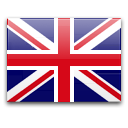The Medical Use of The Tinkle Belle
The medical necessity and usage
of a external urination device
The Tinkle Belle is eligible for Health Savings Accounts (HSA) and for Flexible Spending Accounts (FSA)
The Use of External Urination Device in the Elderly, Post-operative Patients, and Degenerative Bone Disease (Osteoarthritis), Overactive
With proper nutrition and hydration, the average human adult bladder[1] fills at a rate of 2 oz per hour, involuntarily, and around the clock. A normal bladder can hold up to approximately two cups of water before it overflows. This means that adults need to use the bathroom about four to ten times a day[2] ideally before the bladder fills up and the pressure becomes unbearable. Diet, hydration, exercise, medication, disease state, and age regulate how fast a bladder fills up, and certain disease conditions especially those affecting the urinary tract could cause an increase or decrease in urine production. However, regardless of how much urine is produced, the bladder must be emptied several times a day to avoid infections that could potentially be life-threatening.
In normal circumstances, most adults can get to the toilet in enough time to urinate without peeing on themselves. However, women with age, limited mobility, post-operative patients, or degenerative diseases, even with perfect bladders, are sometimes unable to get to the toilet safely and on time. Ultimately, accidents happen that could lead to urinating on one’s self; an experience that is not only embarrassing and depressing but can also affect her quality of life[3].
Certain medical histories affect how a person manages the process of urinating and when the bladder needs to be emptied. In some medical conditions such as urinary incontinence and overactive bladder, an increase in urine urgency or frequency can lead to voluntary and involuntary leaks. Factors such as older age, post-surgery, and existing degenerative diseases can affect mobility and make the process of getting to the bathroom and undressing quickly, a chore.
Urinary Incontinence: Leaking urine (urinary incontinence), which can result from sphincter dysfunction, is most often involuntary. According to the International Continence Society (ICS), urinary incontinence is an “involuntary loss of urine that is a social or hygienic problem and is objectively demonstrable.” It is estimated that about 50% of women will experience urinary incontinence in their
lifetime and about 18% of the adult female population[4] has urinary incontinence or urinate on themselves often. The prevalence increases with age from about 8% for women aged 30-39 and up to 33% of women aged 80-90 years, due to factors like aging, chronic disease, medications, multiple childbirth, and other relevant past medical history. Given that the elderly make up a good percentage of the population, many millions of women will pee on themselves, for several reasons, in their lifetime. Urinary incontinence can manifest as stress incontinence which is predictable, urge incontinence is unpredictable, or a mix of both, and can occur in varying degrees from a few droplets of urine to complete involuntary emptying of the bladder. It can happen a few times in a month or even a few times in a day, but regardless of how often it happens, urinary incontinence can be a source of anxiety and infections if not managed properly.
Overactive Bladder: The elderly population as well as some young people, suffer from overactive bladders that make it harder to get to the bathroom in enough time to avoid accidents. Overactive bladder[5] (OAB) is a group of urinary symptoms that increases the urge and frequency of urination even when the bladder is not full thus leading to urine leaks. OAB can be caused by a variety of conditions including hormonal changes, urinary tract infection (UTI), pelvic weakness, diseases that affect the spinal cord, and neurological disorders that affect the signals between the bladder and the brain. About 40 percent of women in the United States suffer from one or more symptoms of overactive bladder and a great many do not seek medical attention. An overactive bladder can lead to isolation, depression, tiredness, poor sleep quality, infections, and an overall decreased quality of life. It can also affect relationships, work, exercise, and social life.

Elderly: Elderly women may have limited mobility as well as other existing chronic conditions that make a usually stress-free process like walking to the bathroom and undressing a challenging task. Navigating the bathroom for an elderly woman may also pose a risk of falls that could have devastating consequences. The US census bureau[6] estimates that about 40 percent of people 65 and older have at least one disability that reduces their mobility, and about 60 percent of this subset of people reported difficulty with simple daily activities like walking and climbing stairs. These percentages represent millions of women who might sometimes need an alternative way to urinate other than the toilet.

Degenerative Bone Disease: People with degenerative bone disease and osteoarthritis that affects the hands, feet, spine, hips, and knees, typically have a difficult time using the bathroom even with functional bladders. They frequently need help with undressing and squatting to urinate, and a trip to the bathroom is often a hassle.

Post-operative Patients: Patients who have recently had certain types of surgeries may also have problems with making it to the toilet as they may have restricted movement for their safety. Going to the bathroom on their own, or even with help can be tasking and sometimes unsafe. Some of these patients may be undergoing physical therapy for strength and eventually recover their ability for independent use of the bathroom but during their early post-op healing, movements like squatting in the bathroom can be painful and might be dangerous as well. Tinkle Belle is perfect for post-op patients with knee, back, hip, and plastic surgeries.

Current Treatment and Management Options
Urinary incontinence, overactive bladder, and accidental urination due to age and limited mobility are typically treated using lifestyle changes, behavioral modifications, drug interventions, and surgery which can be invasive. Some patients, however, will fail drug and behavioral therapy and even though catheterization might seem to be an option it carries a risk of chronic and serious UTIs in the long run. An external hypoallergenic collection device[7] like Tinkle Belle which eliminates the need to disrobe or squat, subsequently reducing the risk of injuries, is an appropriate and safe tool for women to direct the flow of urine and reduce trips to the toilet, while maintaining her quality of life and reducing the risk of falls.
External Urination Device: Tinkle Belle
Tinkle Belle is a portable device that gives females the freedom to urinate when needed even when not close to the toilet. We believe that females do not have to be limited to physical toilets when the urge to urinate hits, especially when they are unable to get to a toilet due to medical reasons. Many women, like the older woman, post-operative patient, or those with degenerative bone diseases mainly rely on absorbent pads, waterproof garments, and catheterization to manage their urinary incontinence. Even though these can help they are often not very discreet or comfortable. External urinary devices such as the Tinkle Belle are beneficial especially to post-op patients, patients with joint degeneration, and the elderly.
Why Use Tinkle Belle
Anatomical Fit – Tinkle Belle is made for the shape and curve of the female anatomy to increase effectiveness, ease of use, and comfort during use. It really is as easy as sliding the device under garments, placing it in the right spot, and then urinating.
Leak Proof – Tinkle Belle is leak-proof and will not collapse while using. This ensures that women can urinate without an embarrassing leaky mess that could damage the integrity of the skin and cause infections.
Antimicrobial – One of the major medical concerns with urinary incontinence and utilization of pads is infections, especially on the skin. Tinkle Belle is antimicrobial and can be used even without a tissue. Antimicrobial properties are built into The Tinkle Belle to inhibit the growth of bacteria and germs. The antimicrobial properties will not protect you or others against bacteria, viruses, germs, or other disease organisms, but will inhibit germs on The Tinkle Belle.
Hydrophobic and Hypoallergenic – Aside from being antimicrobial (won't grow bacteria), Tinkle Belle is also hydrophobic (made to shed fluids) which allows it to draw fluid away from the body and eliminates the need for the use of toilet paper after urination. The Tinkle Belle is also hypoallergenic, so the user doesn’t have to worry about getting an allergic reaction. It is BPA-free, silicone-free and latex-free.
Discreet – Due to its small size and weight, Tinkle Belle is discreet so the user can urinate in comfort without the anxiety or fear of everyone knowing their medical condition or urinary limitations. It comes with a machine-washable stylish carrying pouch which helps to keep it even more discreet.
Portable, foldable, and compact – Most women who want The Tinkle Belle at home or on-the-move are already struggling with keeping up with their health, so a perfect device has to be easy to carry and store after use. Tinkle Belle is compact as it measures 9.25 inches and weighs 1.8 oz (2.6 oz with our carrying case). When folded, it measures even smaller at 5.5 inches. The attached carrying pouch has a carabiner for additional carrying options.
Comfortable – Apart from being anatomically correct for the female, Tinkle Belle is also designed for extra comfort by being soft and flexible, with a rounded edge for ease and comfort of wiping. It also has thumb rests for proper alignment and ease of use.
Long length – Tinkle Belle is designed for every user especially those that need that extra length to point the device away from the clothing to avoid accidental splashes.
Appropriate for all ages and sizes – There is no age limit for the use of
The Tinkle Belle. Females of any age and size can use Tinkle Belle easily and comfortably. The Tinkle Belle shell can be compressed smaller or spread to open wider. Younger girls including post-operative young children, even though they might need adult help, can also benefit fully from using The Tinkle Belle.
Use it fully clothed – Tinkle Belle is designed to be used without undressing, something that can be difficult for some women such as elderly patients, post-operative patients, and patients with degenerative bone disease.
Easy to clean – Unlike some hospital-grade urinary devices that might need disinfection after use, Tinkle Belle is easy to wipe clean with a disinfecting wipe, tissue or clean water, dries with a gentle shake, then stored until water and soap are accessible. It can be sanitized by utilizing the top rack of the dishwasher.
Easy to store at room temperature – Unlike large devices that take up a lot of space and need special storage conditions, Tinkle Belle’s compact size and material make it easy to store in any space and at room temperature for an extended period.
Reusable and Durable – Tinkle Belle was designed for multiple-use making it more cost-effective than single-use devices. It is also made of a durable hard shell that not only catches more urine but also makes the device long-lasting.
Earth-friendly and UV stabilized - Tinkle Belle is UV stabilized for outdoor use and is environmentally friendly. Every purchase of Tinkle Belle also supports orphanages that provide food, clothing, education, clean water, and shelter to children in developing countries.
Patented and Made in the USA – Tinkle Belle is manufactured in the USA and is patented with US patents D842985S1 and 10568456B1 and EU patent 005509619-0001.

[1] “The Urinary Tract & How It Works” National Institute of Diabetes and Digestive and Kidney Diseases (NIDDK), part of the National Institutes of Health. The NIDDK translates and disseminates research findings to increase knowledge and understanding about health and disease among patients, health professionals, and the public. Content produced by the NIDDK is carefully reviewed by NIDDK scientists and other experts. https://www.niddk.nih.gov/health-information/urologic-diseases/urinary-tract-how-it-works
[2] “Urinary Frequency” Bladder and Bowel Community, Forward House, 17 High Street, Henley-in-Arden, B95 5AA, bladderandbowel.org, https://www.bladderandbowel.org/bladder/bladder-conditions-and-symptoms/frequency/
[3] “Factors Affecting the Severity of Urinary Incontinence and the Quality of Life of Women With Urinary Incontinence” Hyun Soo Oh, Mi Kyung Kim, National Center for Biotechnology Information, 8600 Rockville Pike Bethesda, MD 20894, https://pubmed.ncbi.nlm.nih.gov/16027498/
[4] “Urinary Incontinence in US Women, A Population-Based Study” Jennifer L. Melville, MD, MPH; Wayne Katon, MD; Kristin Delaney, MPH; et al, https://jamanetwork.com/journals/jamainternalmedicine/fullarticle/486453?resultclick=1
[5] What is Overactive Bladder (OAB)? https://www.urologyhealth.org/urologic-conditions/overactive-bladder-(oab)#:~:text=Overactive%20bladder%20(OAB)%20is%20the,when%20they%20feel%20this%20urge Urology Care Foundation, 1000 Corporate Boulevard, Linthicum, MD 21090
[6] Elder
[7] “ Incontinence Products and Devices for the Elderly”,
Diane K Newman, https://pubmed.ncbi.nlm.nih.gov/15446380/ National Center for Biotechnology Information, 8600 Rockville Pike Bethesda, MD 20894
Download this whitepaper article here





